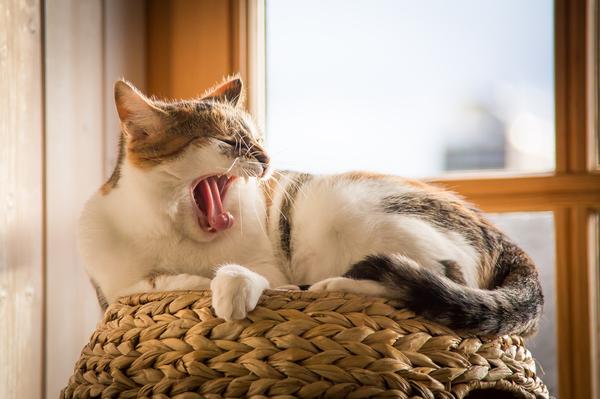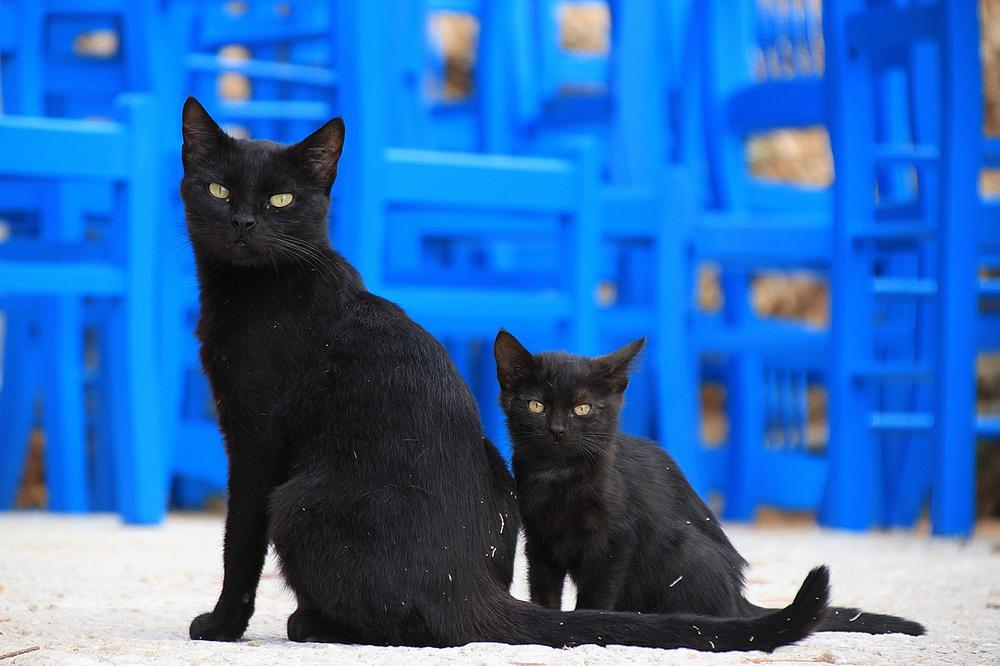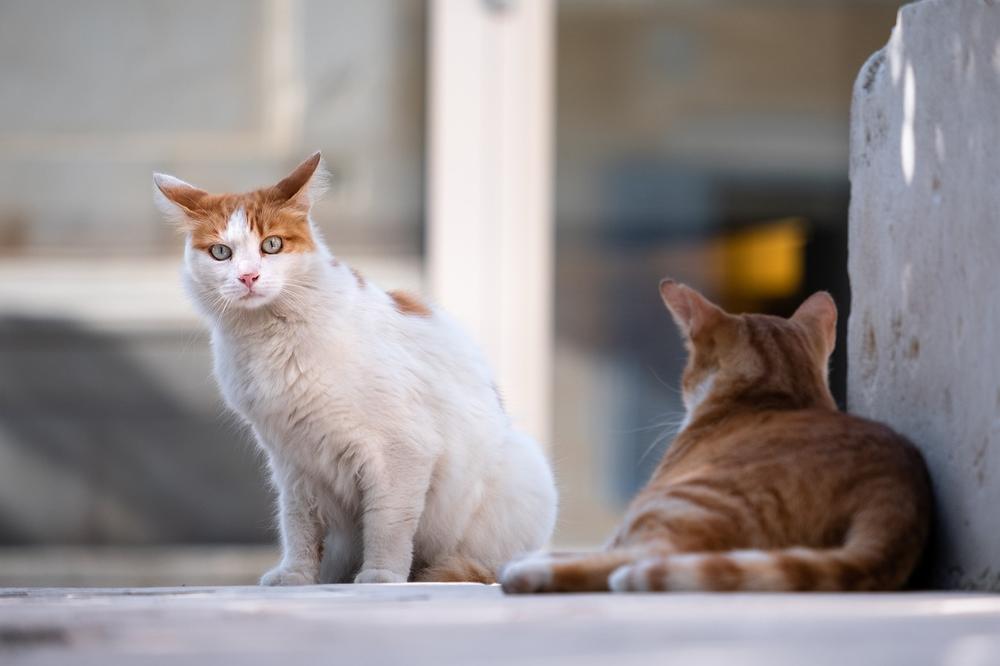My Cat Feels Cold to the Touch: Should I Worry? (Answered)

Ever touched your cat and gotten that icy feeling, like you're holding a bag of frozen peas?
And then your heart sinks and you panic, wondering if something's dangerously wrong with your beloved fur baby? 😢
I understand.
Your mind starts racing, conjuring up images of your fluffy friend in a life-threatening situation.
But take a deep breath, my friend.
Let's explore this together and put your worries to rest.
Shall we?
Why Might Your Cat Feel Cold to the Touch?
Cats may feel cold to the touch due to various reasons, such as lounging on cool surfaces or spending time outdoors. However, you have to note that feeling their fur isn't a reliable indicator of body temperature. What truly matters is that their skin radiates warmth, which indicates they are maintaining a normal body temperature.
So here's the deal...
You know that moment when you touch your cat and their fur feels ice-cold to the touch?
Well, don't jump to conclusions just yet.
It doesn't necessarily mean they're running a fever or anything worrisome like that.
There are actually several reasons why cats can feel cold on the surface.
For instance, if they've been lounging on cool surfaces or enjoying some time outdoors, their fur can absorb that icy sensation.
But here's the thing:
Feeling your cat's fur with your hand isn't exactly foolproof when it comes to checking their body temperature.
It's sort of subjective, you know what I mean?
But let me fill you in on what truly matters...

Beneath all that fur, your cat's skin should radiate warmth.
That's the key indicator we're after.
You see, your furry friend typically maintains a body temperature of around 38-39oC (or about 100-102.5F) which is considered normal for them.
Even if they boast a luxuriously thick coat or spend their days inside without venturing into the cold, they might still feel chilly to the touch while being cozy warm underneath.
Think of it as having a crackling fire warming up your living room while feeling a slight chill from the outside air through the roof.
So, take a deep breath and resist the urge to panic if your precious feline's fur feels a tad frosty.
As long as their skin exudes warmth and they're behaving just fine, there's no need to worry.
Everything should be as "purrfect" as can be.
Main points I'll expand upon further down this article:
- Hypothermia in cats is a serious and potentially life-threatening condition.
- Signs of hypothermia include shivering, lethargy, weak pulse, and shallow breathing.
- Cats that are outdoors, stray, short-haired, or hairless are more prone to hypothermia.
- Medical factors such as injuries, shock, and certain medical conditions can make cats more sensitive to cold.
- Proper care and attention should be given to hairless breeds in cold environments.
- Provide warm towels, sheltered areas, and cozy bedding to keep cats warm.
- Monitor weight and provide extra nourishment for outdoor cats in cold weather.
- Passive external treatments like blankets and heating pads can help keep cats warm.
- If your cat is showing symptoms of being unwell or has cold extremities, contact a veterinarian.
- Bring outdoor cats indoors when the temperature drops below freezing.
But here's the thing...
While feeling a slight chill on their fur is typically nothing to fret about, there is one condition you must be aware of.
Hypothermia in cats can pose a serious threat and requires immediate attention.
So, if you've ever wondered what sets feeling chilly apart from a critical medical emergency, let me fill you in on the warning signs and symptoms to keep an eye out for.
Trust me, you don't want to miss this crucial information - it could save your cat's life!
What Is Hypothermia in Cats?
Hypothermia in cats is dangerous.
Exposure to cold can drop a cat's body temperature below normal. Severe hypothermia signs include dilated pupils, unconsciousness, or weak pulse - this means an emergency!

Note the difference between feeling chilly and hypothermia - critical condition needing quick help.
And if you're concerned about the temperature extremes affecting your furry friend, I have just the information you need.
In my blog post, How Hot Is Too Hot for Cats, I offer helpful insights into the recommended temperature limits to keep your cat safe from heat-related dangers.
Don't wait until it's too late – discover the vital details you need to know.
Signs of Hypothermia in Cats
Identify the signs of hypothermia in cats
You know, sometimes cats can surprise you by staying cozy even in freezing temperatures.
But unfortunately, just like humans, cats can suffer from hypothermia too.
Keep an eye out for these symptoms
One of the first signs that your cat may have hypothermia is shivering. They're trying to warm themselves up.
You might also notice pale or blue-tinged gums, a slow heartbeat, shallow breathing, or even collapsing or going into a coma.
Certain cats are more at risk
Not all cats handle cold weather well.
If your cat spends a lot of time outdoors, is a stray cat, has short hair, or is hairless (like those cute Sphynx kitties), they are more prone to hypothermia during the winter months.
Diagnosis and treatment options
Veterinarians use a rectal thermometer for diagnosing hypothermia in cats (sorry, kitties!) and do a physical examination. The sooner the diagnosis, the better their chances of successful treatment.
The main goal of treatment is to quickly raise the cat's core body temperature. This may involve a trip to the vet or close monitoring at home.

Immediate intervention is crucial to prevent any irreversible damage.
So my advice to you, fellow cat owner, keep an eye out for any signs of hypothermia in your feline friend.
Watch for shivering, lethargy, weak pulse, shallow breathing, or any other concerning behavior.
And if you suspect your cat might have hypothermia, don’t wait to seek proper veterinary care.
But did you know that there are other factors besides cold weather that can make your cat feel chilly?
Inadequate nutrition or weight loss due to medical conditions can leave your feline friend more susceptible to feeling cold.
Let me tell you about some of the medical factors that contribute to a cat's sensitivity to cold weather, and why you must provide additional support in certain situations.
Medical Factors That Make Cats Sensitive to Cold
| Medical Factors | Explanation |
|---|---|
| Inadequate nutrition | Cats with poor nutrition may have a weakened immune system, making them more susceptible to the cold. Ensuring a balanced and nutritious diet can help improve their overall health and make them less sensitive to cold weather. |
| Weight loss | Cats that have experienced significant weight loss may have less body fat for insulation, making them feel colder. Monitoring their weight and providing a proper diet can help maintain a healthy body condition and keep them warm. |
| Injuries | Injuries, especially those affecting the vital organs or causing internal bleeding, can lead to a drop in body temperature. Prompt veterinary care is essential to address any injuries and prevent further complications due to the cold. |
| Blood loss | Significant blood loss can result in a decrease in body temperature. Immediate medical attention is crucial to address the underlying cause of blood loss and prevent further complications from the cold. |
| Shock | Shock, which can occur due to various medical conditions or injuries, may cause a drop in body temperature. Identifying and treating the underlying cause of shock is essential to stabilize the cat and prevent further temperature loss. |
| Heart failure | Cats with heart failure may have reduced circulation, leading to difficulty regulating body temperature. Proper diagnosis and management of heart conditions can help improve blood flow and maintain a stable body temperature. |
| Dehydration | Dehydrated cats may have difficulty retaining heat, leaving them more sensitive to cold weather. Ensuring access to fresh water and addressing any underlying causes of dehydration can help improve their tolerance to the cold. |
| Certain medical conditions | Specific medical conditions, such as hypothyroidism or anemia, can affect a cat's ability to regulate body temperature. Veterinary consultation and appropriate treatment are necessary to manage these conditions and prevent cold sensitivity. |
| Low body temperature | Cats with a naturally lower body temperature or those experiencing hypothermia are more susceptible to the cold. Taking immediate measures to warm the cat and seeking veterinary assistance is crucial in these cases. |
| Surgery risks | Anesthesia-associated hypothermia is a potential risk during surgery, which can lead to complications. Internal treatments to maintain body temperature may be necessary to mitigate these risks and ensure successful surgical outcomes. |
If your cat feels cold, it could be due to poor nutrition or weight loss caused by certain medical conditions.
There are several medical factors that can contribute to your cat's sensitivity to the cold.
Injuries or blood loss can make cats feel cold.
Shock, heart failure, and dehydration also play a role in their chilly disposition.
Conditions like hyperthyroidism, heart issues, kidney failure, and shock further increase their vulnerability to hypothermia.
Low body temperature can be caused by shock, cardiovascular disease, limb thromboembolism, toxicity-related substances, septic shock, or frostbite.
So if you see your cat shivering, you should consider these health factors.
Also, watch out for cats with bony hips or shoulders as they may indicate weight loss and underlying illnesses.
Although fur provides insulation, cats may need extra support in freezing temperatures or if they have specific health conditions.
You ought to note that young kittens, elderly cats, and stray felines are particularly at risk in cold temperatures due to their physiological concerns. Healthy adult cats generally adapt well to the cold, unlike hairless breeds, young cats, older cats, or those with health issues.
For instance, Sphynx breeds, who are hairless, should definitely be kept indoors during bad weather. They might even need sweaters to stay cozy.
It's worth mentioning that cats undergoing surgery face a higher risk of anesthesia-associated hypothermia, especially in lengthy surgeries with heavy sedation.
In such cases, intravenous fluids and heat ventilation are recommended.
You know best what your cat needs to stay warm and comfortable.
By paying close attention to these medical factors, you can ensure that your furry companion remains cozy and content, no matter the weather outside.
If you're concerned about how long a cat can survive locked in a shed, you'll find all the answers in my blog post on How Long Can a Cat Survive Locked in a Shed. I advise you to take a look and put your mind at ease.
But how can you ensure that your cat stays warm and comfortable in the face of these medical factors?
Don't worry, I've got you covered with some practical tips and advice to create a cozy and inviting environment for your feline friend!
Tips for Keeping Your Cat Warm in Cold Winter Weather
Here's how you can keep your cat warm during the cold winter months:
- Get them a comfy bed or heated cat bed so they can snuggle up.
- Place their bed in the sunlight during the day to soak up some natural warmth.
- Give them blankets to curl up with for extra insulation.
- Consider getting sweaters or jackets made specifically for cats, especially if they have short hair.
- Spend quality time cuddling and giving them body heat - they love the warmth and attention.
- Ensure their sleeping areas are free from drafts and provide lots of cozy bedding.
- Make sure they have access to elevated spots like cat trees or window perches where warm air gathers.
- Keep an eye on their appetite and make sure they're eating enough as cold weather can decrease their hunger.
- If your cat stays outdoors, use things like blankets, heating pads, or heated water bottles in their shelter to keep them warm.
- Keep indoor cats mentally and physically active through stimulating play and exercise.
Your furry companion can remain cozy and comfortable throughout the entire winter season with the assistance of these suggestions!

And now, let's talk about what to do if you notice your cat feeling cold and whether or not it's a cause for concern.
I want to stress the importance of paying attention to your cat's behavior and considering any signs of illness that may accompany their cool fur...
When Should You Worry About Your Cat Feeling Cold?
When it comes to your cat feeling cold, there are a few things you should please bear in mind.
- Pay attention to their behaviors: Look out for changes in behavior, such as excessive shivering or seeking warmth constantly.
- Check their body temperature: If your cat's fur feels cool to the touch but they appear otherwise healthy and normal, it's most likely nothing to worry about.
- Observe for signs of illness: If your cat is not just cold to touch but also displaying symptoms like lethargy, pain, or cold extremities, it's crucial to take them to a vet for a thorough examination.
- Note any respiratory issues: Although cats don't get respiratory illnesses directly from the cold, if your cat has a lack of appetite, cat flu symptoms, or other breathing troubles, consult a vet right away.
- Monitor for digestive abnormalities: Keep an eye out for diarrhea, vomiting, or other digestive issues that may be related to cold weather or underlying health problems.
Seeking advice from a veterinarian is always recommended when you have concerns about your cat's well-being and comfort. 😺
Please bear in mind that treating low body temperature can be costly, ranging from $200 to $6,000 on average, so you should take preventive measures.
To ensure your outdoor cat doesn't suffer from hypothermia or frostbite, bring them indoors when the temperature drops below freezing or below 7 degrees Celsius.
By staying vigilant and taking proper care of your cat in cold weather, you can help ensure their well-being and happiness.
And that wraps up today's article.
If you wish to read more of my useful articles, I recommend you check out some of these: Can Cats Drink Tap Water, Cat Weighted Blanket, How Long Can a Cat Go Without Drinking Water, and Are Heating Pads Safe for Cats
Talk soon,
-Sarah Davis